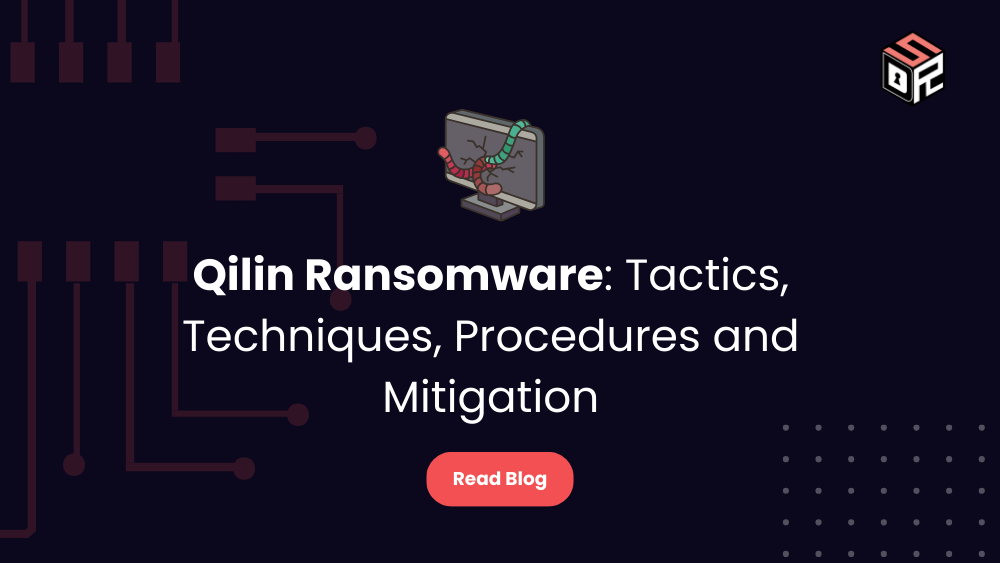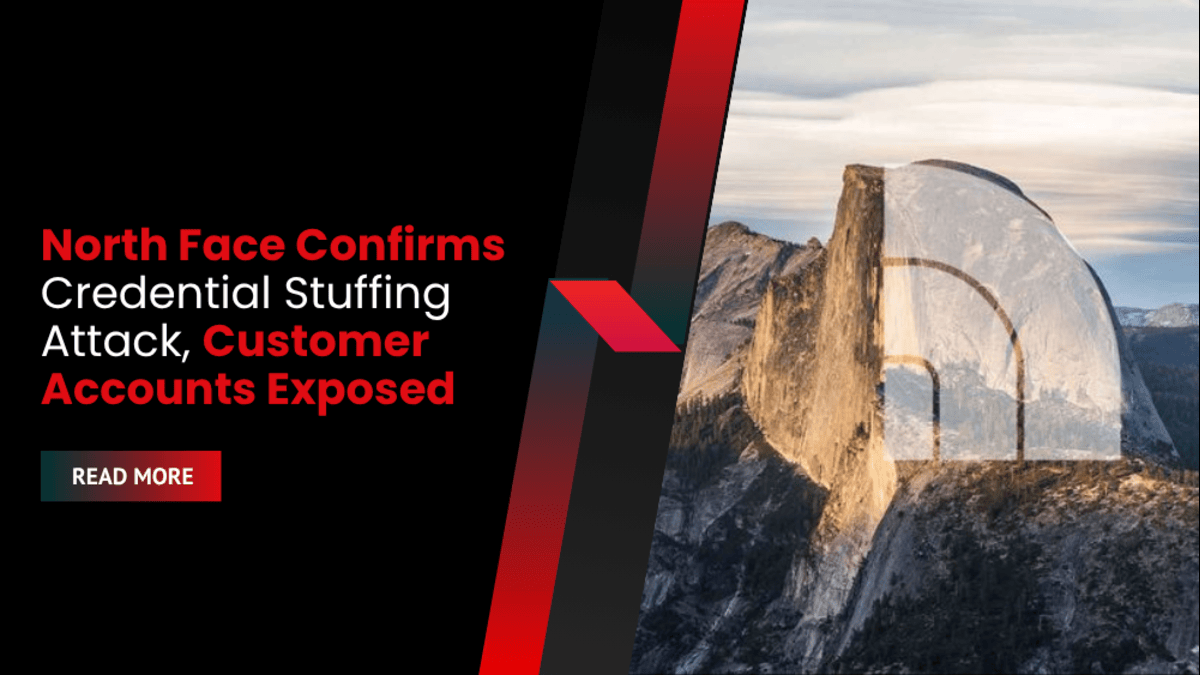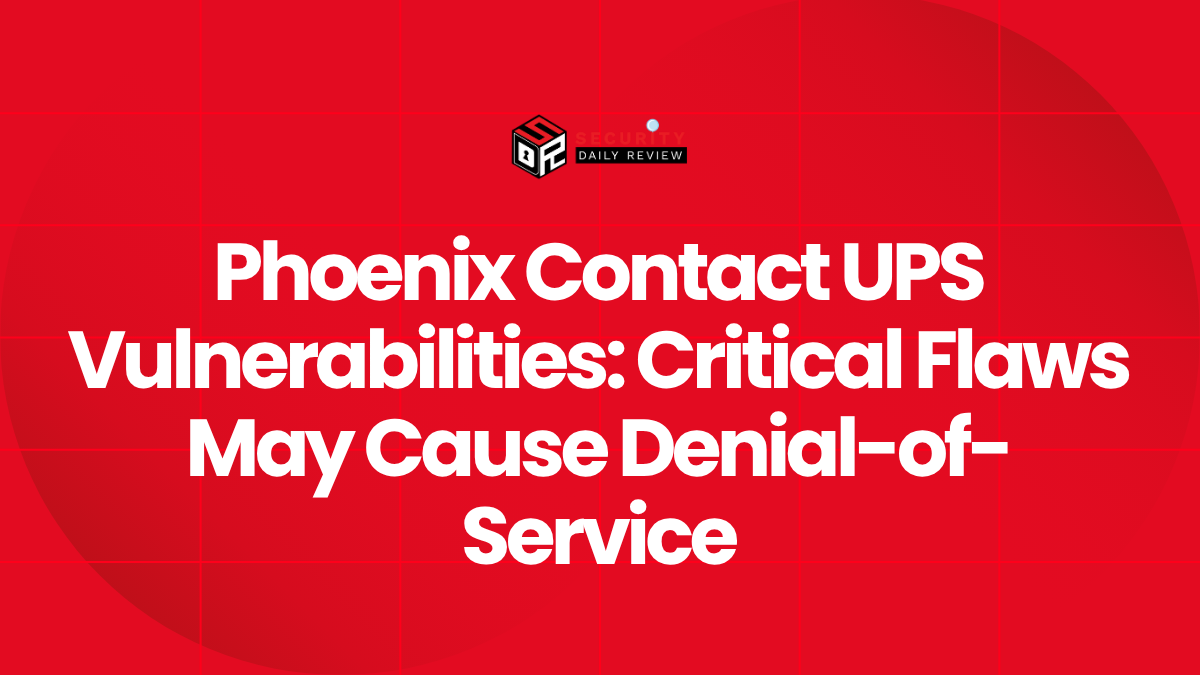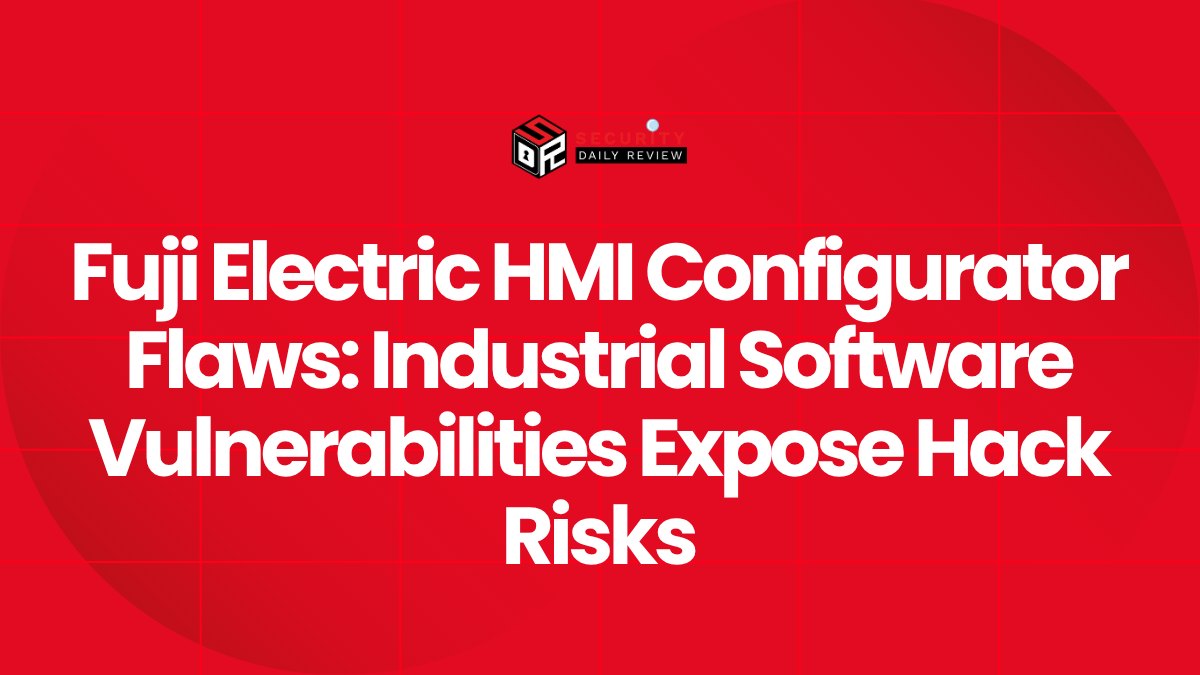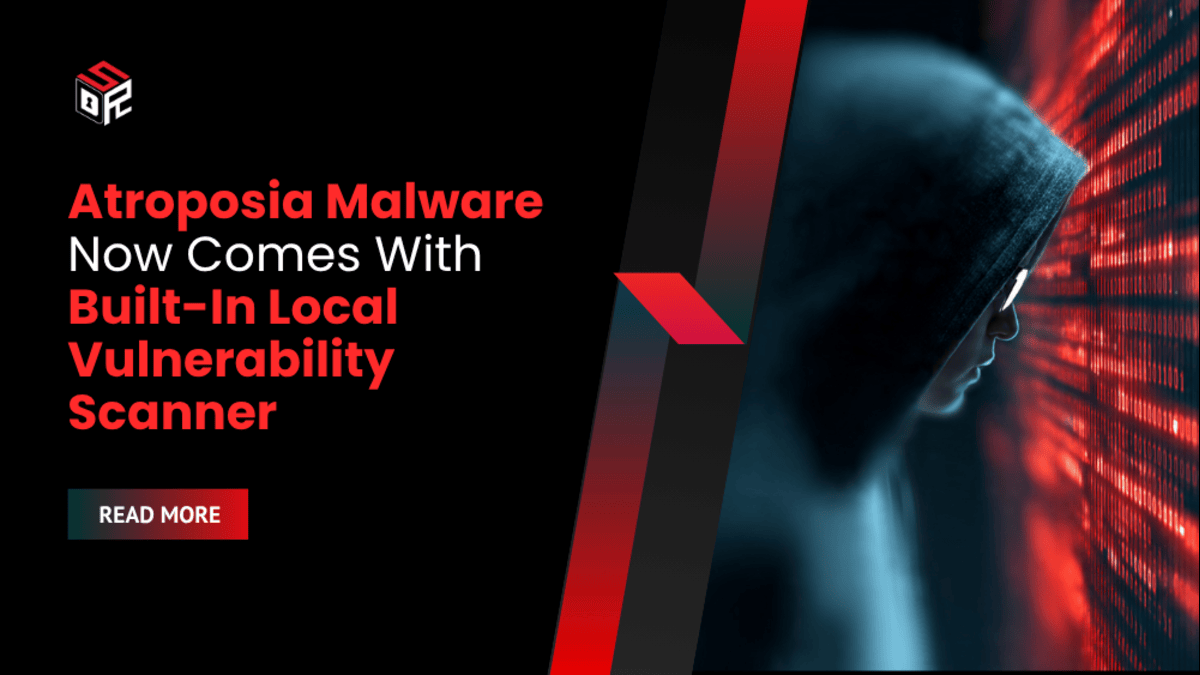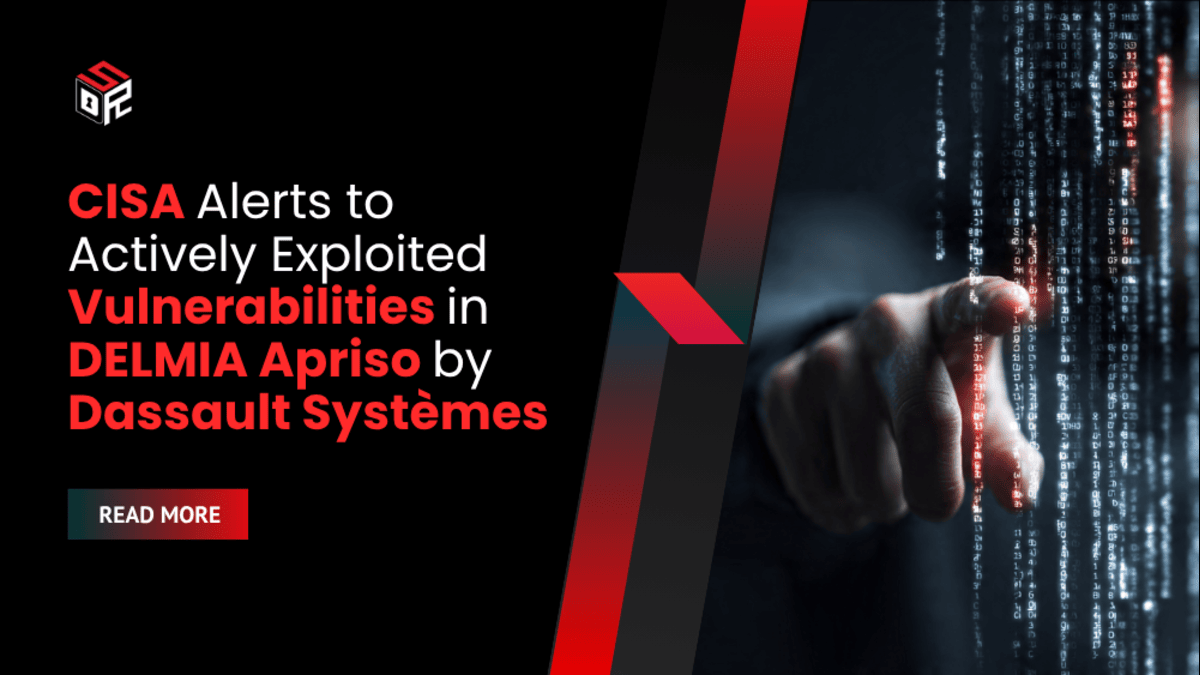Qilin ransomware! This isn’t your average malware. In July 2022, a new player emerged in the ransomware-as-a-service (RaaS) landscape, quickly making headlines with a staggering $50 million ransom demand from Synnovis, a pathology services provider. The ripple effect? Significant disruptions across key NHS hospitals in London. This incident alone underscores the severity and sophistication of the Qilin ransomware threat. This blog post will dissect Qilin’s advanced tactics, techniques, and procedures (TTPs), equipping you with the knowledge to protect your organization.
Qilin ransomware isn’t just another headline; it’s a serious threat to businesses and critical infrastructure worldwide. Initially an offshoot of the Agenda ransomware (written in Go), Qilin has undergone a significant transformation, evolving into a robust, Rust-based variant. This upgrade signifies a considerable leap in sophistication, incorporating advanced techniques in malware construction and evasion. The implications are clear: traditional security measures might prove insufficient.
- Qilin’s advanced capabilities make it exceptionally difficult to detect and remove. Its multi-pronged approach to initial access, combined with its ability to evade detection and disable recovery mechanisms, presents a significant challenge. The potential for widespread damage, as seen in the Synnovis attack, is substantial. A Qilin ransomware infection can lead to significant financial losses, reputational damage, and operational disruptions.
- Imagine the chaos: encrypted data, disrupted operations, and the pressure of a multi-million dollar ransom demand. The impact extends beyond immediate financial losses. The recovery process can be lengthy and complex, requiring specialized expertise and potentially leading to irreversible data loss. The lack of readily available Qilin ransomware decryption tools further exacerbates the situation for victims. The absence of a quick solution adds to the stress and uncertainty. This is not a scenario any organization wants to face.
Understanding Qilin’s TTPs (Tactics, Techniques, and Procedures)
This section details Qilin’s attack methodology, providing a granular understanding of its operational evolution. We will examine its TTPs according to the MITRE ATT&CK framework.
TA0001: Initial Access Methods
Qilin ransomware employs a multi-pronged approach to breach target networks, leveraging both misconfigurations and software vulnerabilities. This mirrors tactics observed in other high-profile ransomware groups, highlighting a concerning trend in cyber intrusions.
- T1133 External Remote Services: Qilin operators frequently target remote access services, particularly those within Fortinet devices. Exploiting vulnerabilities in older versions within firewall clusters is a common tactic. Compromising a FortiGate device allows attackers to leverage SSL VPN functionality to move laterally within the network, often targeting failover servers for continued access even during service disruptions. Brute-force attacks against VPN endpoints are also used, though log data is often erased to hinder forensic analysis.
- T1190 Exploit Public-Facing Application: A significant initial access vector involves exploiting publicly exposed applications. A prime example is the exploitation of CVE-2023-27532 in Veeam Backup & Replication software. This vulnerability allows attackers to retrieve encrypted credentials from the configuration database, bypassing standard authentication. This grants access not only to backup infrastructure but also facilitates broader network compromise. The affected Veeam versions include build 12 (12.0.0.1420 P20230223) and 11a (11.0.1.1261 P20230227). A proof-of-concept exploit is publicly available on GitHub. This highlights the critical need for timely patch management and vulnerability mitigation – a key defense strategy against Qilin.
TA0002: Execution
- T1204.002 – User Execution: Malicious File: Once network access is established, the ransomware payload is deployed to the
C:\tempdirectory asw.exe. Execution requires a specific password, passed as a command-line argument and hashed using SHA-256. The resulting hash is compared against a pre-defined hash within the ransomware’s configuration. A match triggers execution; otherwise, it terminates. While the password is embedded, cracking the SHA-256 hash is computationally infeasible if a sufficiently complex password is used. - Optional Command-Line Arguments: Qilin supports optional command-line arguments to customize functionality. These arguments can modify encryption routines, define target directories, enable persistence, or configure communication with a command-and-control (C2) server. This modular design enhances the ransomware’s versatility and adaptability.
TA0004: Privilege Escalation
- T1078.002 Valid Accounts: Domain Accounts: While there’s no confirmed evidence of Qilin using the specific CVE-2023-27532 exploit, publicly available proof-of-concept exploits demonstrate its potential for gaining access to backup servers.
- T1134 Access Token Manipulation: Qilin uses an embedded Mimikatz module to achieve SYSTEM-level access. This module targets
lsass.exe,winlogon.exe, andwininit.exeto extract user tokens, which are then impersonated to create processes with elevated privileges. This bypasses User Account Control (UAC). - Symbolic Link Manipulation: Qilin manipulates symbolic links using the commands
fsutil behavior set SymlinkEvaluation R2R:1andfsutil behavior set SymlinkEvaluation R2L:1, enabling remote-to-remote and remote-to-local symbolic link resolution. This enhances stealth and expands its reach across networked environments.
TA0005: Defense Evasion
- T1070 Indicator Removal: Qilin systematically deletes system logs before and after encryption, targeting Windows PowerShell and System logs. A separate thread periodically clears event logs using a PowerShell command:
"powershell" $logs = Get-WinEvent -ListLog * | Where-Object {$_.RecordCount} | Select-Object -ExpandProperty LogName ; ForEach ($l in $logs | Sort | Get-Unique ) {[System.Diagnostics.Eventing.Reader.EventLogSession]::GlobalSession.ClearLog($l)}This hinders forensic analysis and disrupts security monitoring. - T1562.001 Impair Defenses: Disable or Modify Tools: The configuration file allows specifying process names (
process_black_list) and service names (win_services_black_list) to be terminated or stopped.
TA0007: Discovery
- T1087.002 Account Discovery: Domain Account: Qilin systematically enumerates domain-connected hosts. It uses a PowerShell script (
"powershell" -Command "Import-Module ActiveDirectory ; Get-ADComputer -Filter * | Select-Object -ExpandProperty DNSHostName") to query Active Directory for computers joined to the domain, extracting their DNS hostnames. If the ActiveDirectory module is missing or permissions are insufficient, it installs theRSAT-AD-PowerShellmodule using"powershell" -Command "ServerManagerCmd.exe -i RSAT-AD-PowerShell ; Install-WindowsFeature RSAT-AD-PowerShell ; Add-WindowsCapability -Online -Name 'RSAT.ActiveDirectory.DS-LDS.Tools~~~~0.0.1.0'". This ensures it can gather information about potential targets for lateral movement and further exploitation. This multi-step process showcases Qilin’s adaptability and persistence.
TA0008: Lateral Movement
- T1021.002 Remote Services: SMB/Windows Admin Shares: Qilin exhibits worm-like capabilities when the
-spreadcommand-line argument is used. It embeds a copy of Sysinternals PsExec (version 2.43) in its payload, deploying it to the%Temp%directory under a random filename. It uses PsExec to connect to discovered hosts via SMB/Admin shares using commands like%Temp%\<PSEXEC_NAME>.exe -accepteula \\<HOST_IP> -c -f -h -d <LOCKER_PATH> <LOCKER_ARGS> --spread-process(without credentials) or a modified version including username and password for authentication. The-spread-processargument triggers the lateral movement. - Registry Manipulation: Qilin modifies the Windows registry, setting
MaxMpxCtto 65535 to maximize concurrent network connections and accelerate its spread. - VMware vCenter Exploitation: In advanced scenarios, the
-spread-vcentercommand-line argument enables Qilin to leverage VMware vCenter for self-distribution, extending its reach into virtualized environments.
TA0040: Impact
- T1490 Inhibit System Recovery: Qilin compromises backup integrity by manually deleting tape backups, disabling scheduled backup jobs, removing backup jobs within the backup management console, and disrupting the Volume Shadow Copy Service (VSS). The VSS disruption involves starting the service (
net start vss), changing its startup mode to manual (wmic service where name='vss' call ChangeStartMode Manual), deleting all shadow copies (vssadmin.exe Delete Shadows /all /quiet), stopping the service (net stop vss), and finally disabling it (wmic service where name='vss' call ChangeStartMode Disabled). This prevents data recovery. - T1486 Data Encrypted for Impact: Qilin encrypts local files and network-shared data using either AES-256 CTR (with AES-NI hardware acceleration) or ChaCha20. Encryption keys, nonces, and parameters are RSA-4096 encrypted and appended to the encrypted file. Multipass encryption (“fast,” “percent,” “normal” modes) further complicates decryption. Free disk space is overwritten using
cipher /w: "X:\"(where X: is the target disk) to eliminate data remnants. Detailed execution data is logged. - T1529 System Shutdown/Reboot: Qilin reboots the compromised system after encryption, hindering recovery efforts. In some cases, VPN servers are also rebooted to further disrupt operations.
How to Protect Your Data from Qilin Ransomware Attacks
The following strategies are crucial for mitigating the threat:
- Timely Patch Management and Vulnerability Mitigation: Regularly update all systems, especially those exposed to public networks. Patching vulnerabilities in applications like Fortinet devices and Veeam Backup & Replication minimizes initial access points.
- Advanced Endpoint Detection and Response (EDR) Solutions: Deploy EDR and next-generation antivirus tools to monitor for unusual behavior, such as unauthorized process execution, log clearance, and lateral movement. These can detect Qilin’s techniques.
- Continuous Testing and Validation of Security Controls: Regularly test the effectiveness of prevention and detection controls using Breach and Attack Simulation (BAS) solutions. This identifies control gaps.
- Network Segmentation and a Zero Trust Model: Limit lateral movement by segmenting networks and enforcing strict access controls. A zero trust approach confines attackers to a limited area if a breach occurs.
- Regular, Immutable Offline Backups and an Incident Response Plan: Regularly back up critical data using air-gapped or immutable storage. A well-practiced incident response plan, including network isolation procedures, is essential for swift recovery.
Conclusion
Qilin ransomware presents a significant threat, leveraging advanced techniques throughout the attack lifecycle. Understanding these techniques is paramount for implementing robust defenses. Proactive monitoring, continuous testing, and comprehensive incident response planning are crucial for protecting against sophisticated adversaries like Qilin. Implementing the defense strategies outlined above is a critical step in reducing your organization’s risk. Consider using a Breach and Attack Simulation (BAS) platform to proactively test your defenses against Qilin and similar threats and always have a backup plan with Immutable Offline Backups.
FAQs
- Q: What are the key characteristics of Qilin ransomware? A: Qilin is a sophisticated ransomware-as-a-service (RaaS) operation known for its advanced techniques, including the exploitation of vulnerabilities in Fortinet devices and Veeam Backup & Replication software, its use of Mimikatz for privilege escalation, and its comprehensive log-clearing capabilities.
- Q: How can I protect my organization from a Qilin ransomware attack? A: Implementing robust security measures, including timely patch management, advanced endpoint detection and response (EDR) solutions, network segmentation, and regular offline backups, is crucial. Regularly testing your security controls with Breach and Attack Simulation (BAS) tools can also help identify and mitigate vulnerabilities.
- Q: Are there any Qilin ransomware decryption tools available? A: Currently, there’s no publicly available decryptor for Qilin ransomware. Prevention and robust backup strategies are the most effective approaches.

